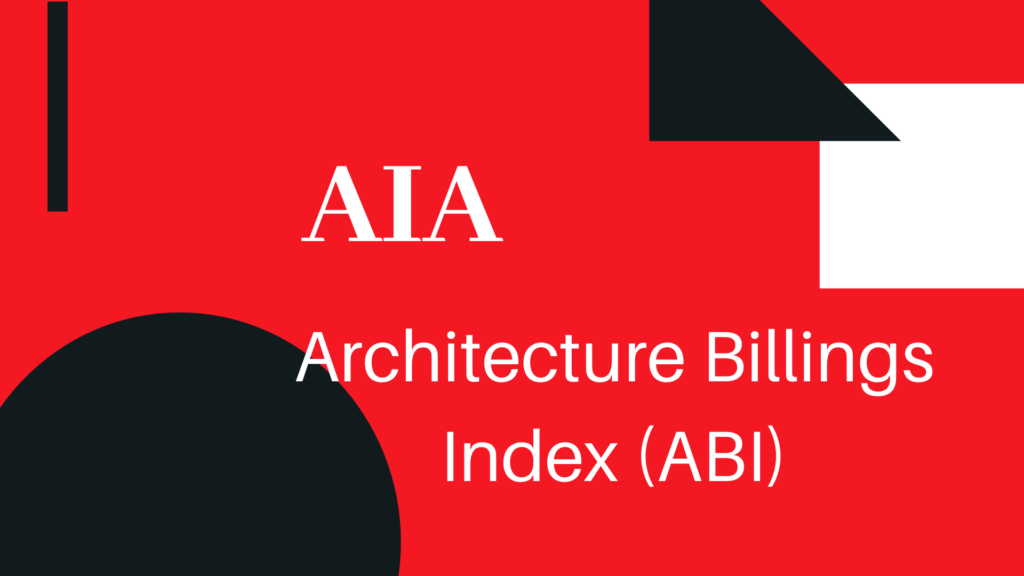
Four in ten firm leaders report seeing an increase in delayed projects at their firm
Architecture firms reported ongoing softness in business conditions to close out 2022, as firm billings declined for the third consecutive month in December. However, the ABI score of 47.5 significantly delayed projects at their firm has been increasing over the last six months, while 30% reported that the share of indefinitely stalled projects has been increasing, and 21% indicated that the share of canceled projects has been increasing.
Overall, firms reported that an average of 13% of the projects at their firm over the past six months have been significantly delayed, 6% have been indefinitely stalled, and 3% have been canceled. Firms with a multifamily residential specialization have been most significantly impacted, as they reported that an average of 18% of their projects have been significantly delayed, in contrast to 15% of projects at firms with a commercial/industrial specialization and 9% of projects at firms with an institutional specialization. Firms located in the Northeast and West regions also reported a higher share of significantly delayed projects than firms in other regions.
Originally published by the AIA.
Continue reading

December 7, 2021 – Freelancers and Independent Contractors Beware: Build Back Better Vows to Impose the PRO Act Which Threatens Your Livelihood
The freedom to work as a freelancer or independent contractor provides flexibility for households and vibrancy to the American economy. It is tailor-made for architecture and design practices and freelance architects seeking to fill the peaks and valleys standard in architecture practices.
The PRO Act bans Right to Work laws nationwide. Still, it also imposes the same independent contractor/freelancer-destroying policies of California’s AB5 law, which has destroyed countless lives and driven people out of the Golden State.
Freelancers and independent contractors want to be their bosses. AB5 and the PRO Act dictate they must have a boss. Households need greater flexibility than ever after the changes brought about by COVID in the workplace.
I have been fighting my whole professional career for the right to freelance and become an independent contractor. We need to rally the political wing of AIA.org and ask their Advocacy group to engage and lobby against this provision of the Build Back Better bill.
Act Now Contact Sarah Dodge, AIA, Senior Vice-President of Advocacy & Relationships, and ask her to put the full force of the AIA’s advocacy group behind removing the AB5 provision out of Build Back Better!
[email protected]
Partial hat tip to the Freelancers Union
Freelance Community
|
AB5 Law, AIA.org, American Institute of Architects, architects, architecture, architecture practices, Build Back Better, Consulting For Architects, COVID, David McFadden, design, economy, Freelancers, freelancing, Independent Contractors, jobs, Livelihood, Pro Act, Workplace
|

Construction spending fell 2.5% sequentially in December to a seasonally adjusted annual rate of $787.9 billion, 6.4% behind the rate of December, 2009, the Commerce Department reported Tuesday morning.
Residential construction fell 4.1% from November to a rate of $226.4 billion, a drop of 6.3% from the prior December. Total private construction was at a rate of $486.9 billion, 2.2% below the revised November estimate of $498.0 billion and 9.8% below December, 2009.
The value of private construction in 2010 was $507.3 billion, 14.3% behind 2009. Residential construction in 2010 was $241.4 billion, 1.7% below 2009.
For public construction, the seasonally adjusted annual rate was $301.0 billion in December, 2.8% below November and 11.2% below December, 2009.Highway construction was at a rate of $84.9 billion, 1.6% below November but 7.5% ahead of December, 2009.
The value of public construction in 2010 was $306.8 billion, 2.7% below 2009. Educational construction in 2010 was $74.4 billion, down 13.6% from 2009, and highway construction was $83.3 billion, 1.7% above 2009.
Via AIA.org
Commercial/industrial sector reports growth for third consecutive month

Summary: Although billings at architecture firms declined for the 30th consecutive month in July, the ABI score increased by nearly two points from the previous month, inching closer to 50. In addition, business conditions continue to improve at firms with a commercial/industrial specialization, despite persistent weakness in the general economy. Survey panelists report that the design phase for nearly half of their projects lasts for less than six months, and that the complexity of the project is the most important influence on the length of that design phase.
—————-
The AIA’s Architecture Billings Index (ABI) score for July inched closer to the 50-point threshold again (a score higher than 50 is an indication of growth), climbing nearly two full points from June to 47.9. While there is growing optimism that billings may grow in the near future, business conditions at many architecture firms remain tenuous, with relief still a long way off.
Inquiries into new work have grown for 16 of the last 17 months, but this month’s score of 53.1 is the lowest since the beginning of the year. However, this may represent a leveling out of the glut of RFPs that firms have been receiving in recent months that have not translated into actual billable work.
Business conditions remain weak at architecture firms in all regions of the country. Firms in the Northeast continue to report the highest scores, but they have been weakening every month since very minimal growth was reported in April. The score increased in the South for the fifth month in a row in July, and is approaching 50 for the first time in more than two years.
Firms with a commercial/industrial specialization reported growth for the third month in a row in July, and while it remained minimal, it is still a positive sign. The highest score in nearly two years for that sector was reported at firms with an institutional specialization, amid reports that building projects funded under the stimulus program are beginning to wrap up.
The most recent issue of the Federal Reserve’s Beige Book reports that, for the most part, the commercial and industrial real estate market remains weak in all regions of the country. However, while vacancy rates in many areas are flat or increasing, office/retail leasing actually has been increasing in New York City. Construction activity continues to weaken in the Atlanta, Minneapolis, Dallas, and Cleveland, but public infrastructure construction is on the rise in Chicago, and most Federal Reserve Board districts anticipate slow growth in commercial/industrial real estate in the near future. And, employment data continues to paint a mixed picture. While overall nonfarm payroll employment declined by 131,000 positions in July, the private sector continued to add jobs, with an additional 71,000 positions. Construction employment remains relatively flat, shedding just 11,000 jobs in July.
This month’s special questions followed up on last month’s questions about the timing of project design phases. Survey respondents reported that the largest share of their projects (42%) have a design phase (defined as lasting from the awarding of the design contract to the completion of the construction documents) that lasts less than six months, while an additional 24% of projects have a design phase typically lasting between six and nine months. Small firms are much more likely to have shorter design phases than large firms, with 59% of projects at firms with less than $250,000 in annual billings having design phases of less than six months, compared to just 23% of projects at firms with annual billings of $5 million or more. Projects at firms with an institutional specialization also tend to have a slightly longer design phase, with nearly half (47%) of projects at those firms having a design phase lasting between six and 12 months.
Our panelists indicated that the complexity of a project is the most important influence on the length of the design phase, followed by project size (construction value), type of client, and scope of design services offered. The project delivery method (e.g., design-build, design-bid-build, integrated project delivery) was not considered to be a very important factor.
To View Additional Charts click here.
Article via AIA.org










